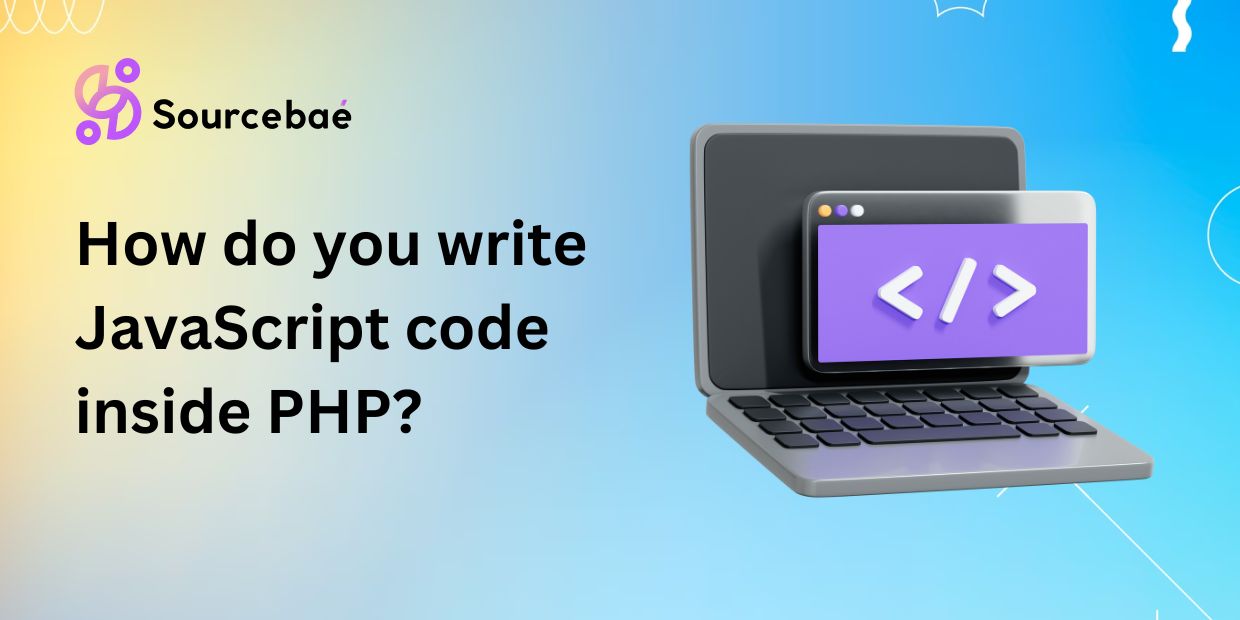JavaScript is a powerful scripting language that adds interactivity and dynamic behavior to websites. PHP, on the other hand, is a server-side scripting language commonly used for web development. While they serve different purposes, there are scenarios where you might need to integrate JavaScript in PHP scripts. In this guide, we will walk you through the process of writing JavaScript code inside PHP and explore various use cases and best practices.
In the ever-evolving world of web development, knowing how to combine different technologies can be a game-changer. Integrating JavaScript into your PHP scripts allows you to create dynamic and responsive web applications. Whether you want to validate user inputs, manipulate the DOM (Document Object Model), or enhance the user experience, understanding how to write JavaScript code inside PHP is a valuable skill.
Getting Started
Let’s dive right in and explore the essential steps to start writing JavaScript code inside PHP. We’ll break it down into manageable chunks for a smoother learning experience.
Setting Up Your Environment
Before you begin, ensure you have a development environment with PHP and a text editor installed. You can use popular text editors like Visual Studio Code or Sublime Text. Having a web server like Apache or Nginx is also essential for testing your PHP scripts.
Embedding JavaScript in PHP
To write JavaScript within a PHP file, you can use the <script> tag. This tag allows you to include JavaScript code directly in your PHP script. Here’s an example:
<?php
// Your PHP code here
?>
<script>
// Your JavaScript code here
</script>✔ New best practice: Instead of directly interpolating PHP variables into <script>, always use json_encode() to avoid XSS and type conversion issues.
<?php
$username = "John";
?>
<script>
const username = <?php echo json_encode($username); ?>;
</script>This approach is safer and ensures your variables are correctly represented in JavaScript.
JavaScript and PHP Interactions
Now that you know how to embed JavaScript in PHP, let’s explore various interactions between these two languages.
Passing PHP Variables to JavaScript
One common use case is passing PHP variables to JavaScript. This enables you to dynamically generate JavaScript code based on server-side data. To achieve this, you can use the echo statement to inject PHP variables into JavaScript:
❌ Old way (unsafe):
<?php
$username = "John";
echo "<script>let username = '$username';</script>";
?>✔ Recommended way:
<?php
$username = "John";
?>
<script>
const username = <?php echo json_encode($username); ?>;
</script>In this example, we’ve created a JavaScript variable username and assigned it a value from PHP.
Calling PHP Functions from JavaScript
Conversely, you can call PHP functions from JavaScript using AJAX (Asynchronous JavaScript and XML). AJAX allows you to make asynchronous requests to the server and retrieve data without refreshing the entire page. Here’s a simplified example:
async function fetchData() {
const res = await fetch('fetch_data.php', {
method: 'POST',
headers: {'Content-Type': 'application/json'},
body: JSON.stringify({action: 'get_data'})
});
const data = await res.json();
console.log(data);
}And in fetch_data.php:
<?php
header('Content-Type: application/json');
echo json_encode(['message' => 'Hello from PHP']);In this case, the fetchData JavaScript function sends a request to fetch_data.php, a PHP script that processes the request and sends back a response.
Advanced Techniques
As you become more proficient in combining PHP JavaScript, you can explore advanced techniques.
Form Validation
Use JavaScript inside PHP applications for client-side form validation before submission. This reduces server load and improves UX.
Dynamic Content Loading
Load more data without a full refresh using AJAX/fetch with script in PHP endpoints.
Real-Time Updates
Combine JavaScript in PHP backends with WebSockets or Server-Sent Events to build real-time apps like chats or dashboards.
Security & Performance Considerations ✅ (New Section)
- Always escape variables: Use
json_encode()for safe PHP→JS injection. - Prevent XSS: Never echo raw user input inside
<script>. - CSRF protection: When calling PHP endpoints with JavaScript, use CSRF tokens.
- Content Security Policy: Prefer external scripts and use CSP headers.
- Performance: Add
deferto<script>tags, bundle/minify JS, and avoid unnecessary server calls.
FAQs
How do I include external JavaScript libraries in my PHP project?
Use the <script> tag with a src attribute. Example:
<script defer src="https://example.com/library.js"></script>Can I write PHP code within a JavaScript file?
No, PHP code cannot be directly written within a JavaScript file (with a .js extension). PHP files typically have a .php extension and are executed on the server, while JavaScript files are executed on the client-side.
Is it necessary to escape PHP variables when passing them to JavaScript?
Yes, it’s essential to properly escape PHP variables when injecting them into JavaScript to prevent security vulnerabilities like cross-site scripting (XSS) attacks. You can use functions like json_encode or htmlspecialchars for safe variable handling.
Are there any performance considerations when using JavaScript and PHP together?
Yes, combining JavaScript and PHP should be done thoughtfully to avoid excessive server requests and ensure optimal performance. Caching, asynchronous loading, and minimizing unnecessary interactions are key strategies to consider.
Can I use PHP to generate dynamic JavaScript code?
Absolutely! PHP can generate dynamic JavaScript code by generating JavaScript strings based on server-side data or conditions. This flexibility allows you to create customized JavaScript logic as needed.
What tools can I use for debugging JavaScript and PHP interactions?
For JavaScript, you can use browser developer tools like the Chrome DevTools or Firefox Developer Tools. For PHP, you can use debugging tools like Xdebug or built-in logging functions to troubleshoot your scripts.
Conclusion
Learning how to use JavaScript in PHP opens up a world of possibilities in web development. This combination empowers you to create feature-rich, interactive, and user-friendly applications. By following best practices like safe variable handling, modern fetch requests, and strong security measures, you can master the art of combining PHP JavaScript effectively. So, go ahead and start building dynamic web experiences that leave a lasting impression on your users.






